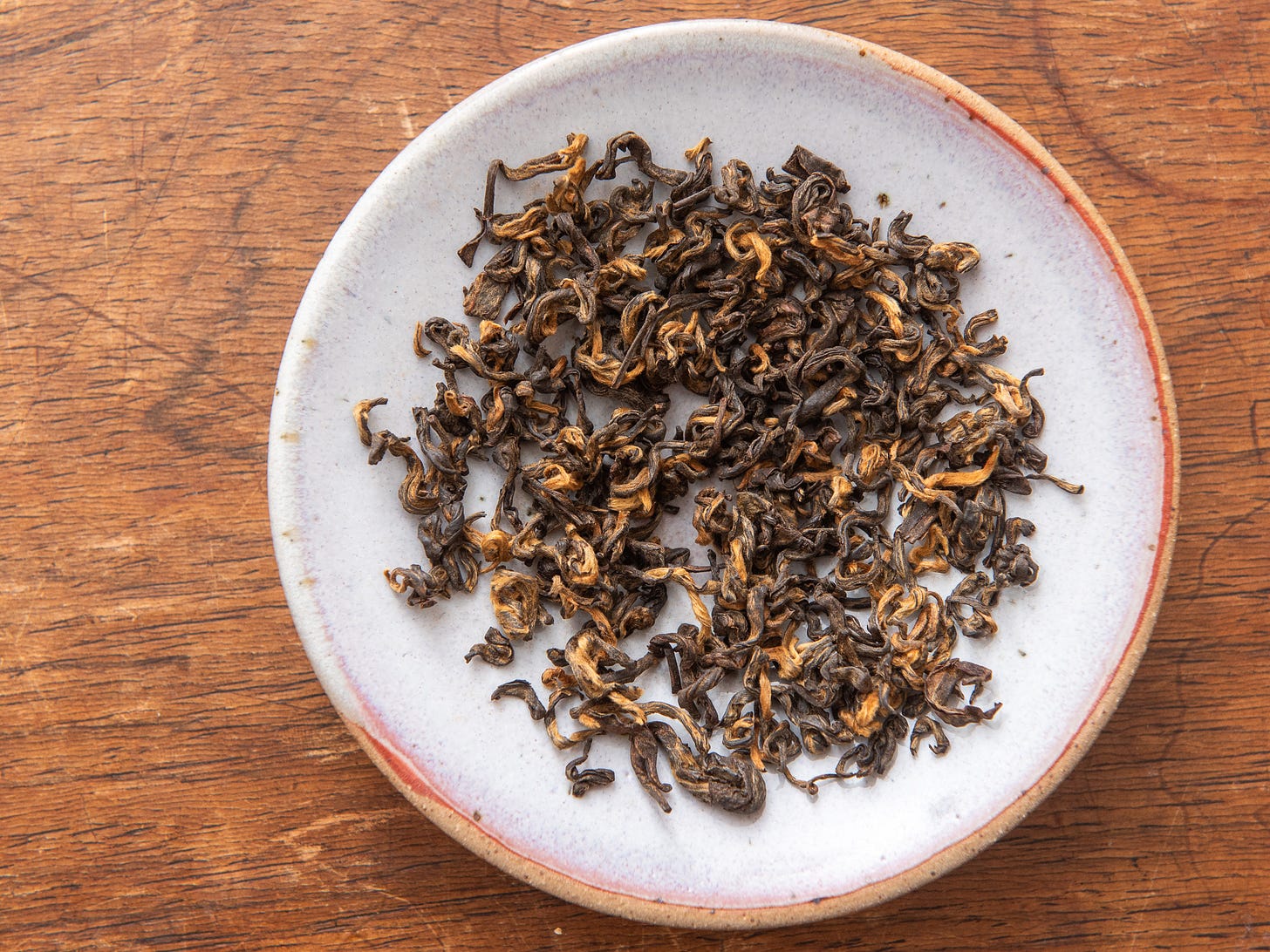A sweeter Nepali breakfast
The tea: Himalayan Golden black tea, sold by Nepali Tea Traders. $14 for 1.6oz.
There are ups and downs to growing tea in an established region. Farmers enjoy a lineage of craft to bolster their productions and a steady market for their teas. But they must also contend with local competition and a consumer’s defined idea of what their teas should be like. In Nepal, which has only been producing specialty tea for 30 years or so, growers have few markets, but face no tyranny of expectations. The culture of Nepali tea is still being invented. So what will it become?
One answer that factories are tinkering with is a spiral shaped, tippy black tea like this Himalayan Golden. In leaf pluck and processing it resembles high grade Chinese keemun (qimen in Mandarin), which is a malty and cocoa-inflected style that became popular with English drinkers in the 18th and 19th centuries. This is a far cry from the orthodox teas that define the neighboring Indian tea industry, and that Nepali makers usually produce. Instead, it’s a showcase for the region’s best leaf. A tea meant to stand apart rather than blend in.
The source: Where the Indian tea industry was born from industrial espionage and colonial brutality, legend says Nepal’s tea business began with a gift. In 1863, China’s visiting Daoguang emperor presented Nepal’s prime minister with some live tea plants. Cultivation in the country’s eastern Ilam district began soon after. Most of this tea is commodity grade that’s consumed locally or traded with India, where it may or may not be labeled as Indian tea to fetch a higher price. In recent decades, farmer coops and bought-leaf factories have introduced smaller batches of higher quality tea, sold proudly as Nepal’s own. Nepali Tea Traders works with one such factory in Ilam; I’ve written more about them in a previous Leafhopper edition.
To brew: Keemun is an old component of English Breakfast blends for its malty flavor and silky texture. That’s a good guide for how to enjoy this keemun-ish tea, namely as a perky morning brew. Start with 4 grams for a 150 milliliter pot (1g/37ml) and steep with boiling water for 1 minute. Flavors of chocolate, clay, and forest floor stand out in the cup, and a sweet aftertaste of spiced honey radiates from the back of the mouth. Up the dose by a gram or two and you’ll get notes of (deez) smoldering nuts. Re-steep several times, adding 30 seconds or so with each brew. There’s a lot going on in these leaves.
What you can learn about a tea from its dried leaves
If you visit a teahouse where they make tea for you, your brewer may present you with a dish of dried leaves before they begin. There’s a whole category of bamboo and ceramic dishes made for this purpose called cha he, or tea presentation vessels. As a beginning drinker, this step mystified me. Yup, those are tea leaves, I wanted to say, but instead I sniffed and stared and pretended like I got something profound from the experience before passing the dish to the next person at the table.
The purpose of presenting dried tea leaves before brewing isn’t that deep. Drinking tea is an immersive experience and a visual once-over is a nice way to begin. Whether sharing or selling it, a brewer who’s proud of their stash wants to show off their quality leaf to guests.
If you dig deeper, you learn that dried tea leaves provide clues to a tea’s style, leaf pluck and grade, flavor, caffeine content, and quality of production. When professional buyers sample dozens of batches, the first thing they do is inspect the leaves. So let’s play a game of detective where Himalayan Golden is our anonymous victim. What can its leaves tell us about its story?
Keep reading with a 7-day free trial
Subscribe to Leafhopper to keep reading this post and get 7 days of free access to the full post archives.








